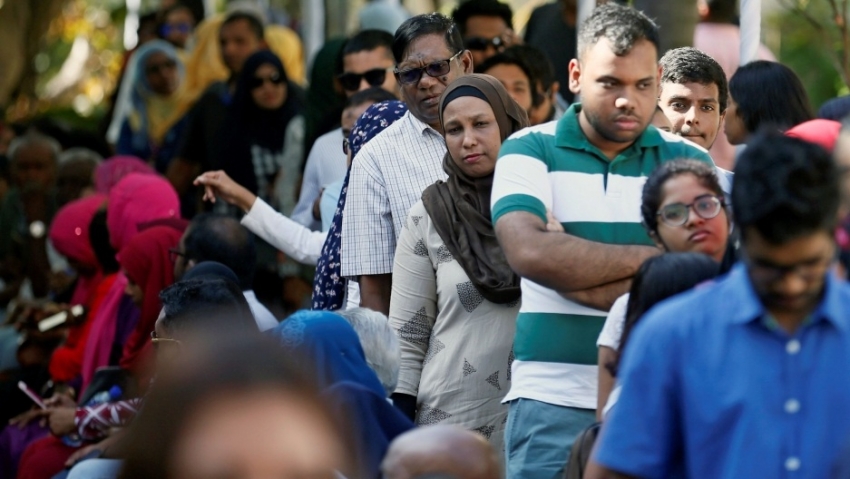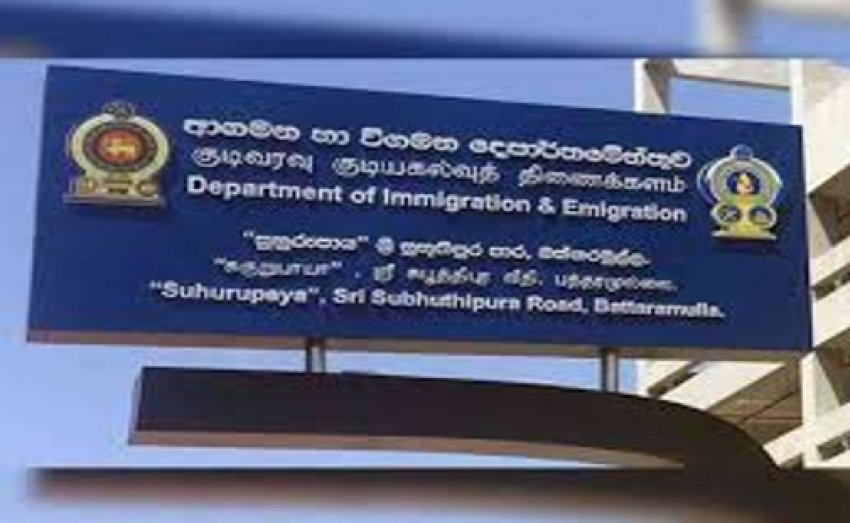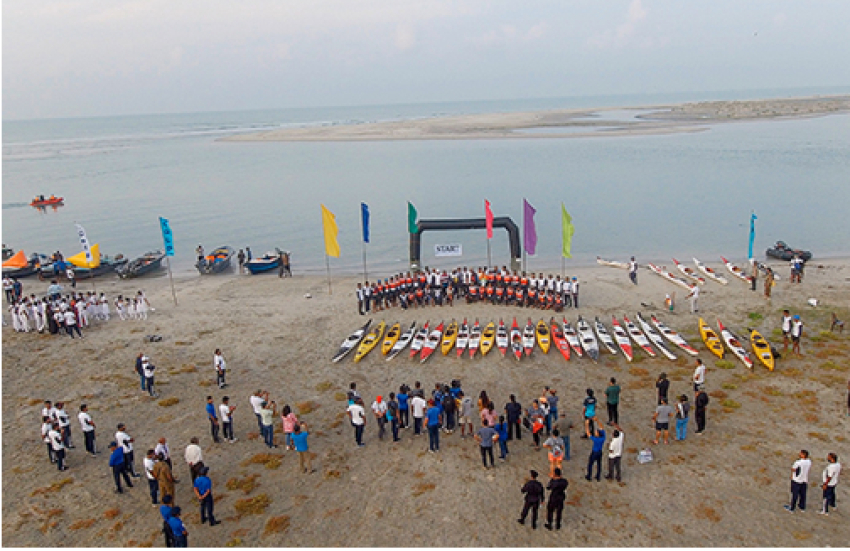In 2018, total debt service cost was 108% of government revenue, meaning all government revenue (plus a bit more) went just to service debt! On average between 2006-18, debt service cost was 93% of revenue. What does the government do with this money? The largest proportion - about 42% of revenue gets spent on salaries and pensions of public servants. Interest on debt absorbs another 37%, the remainder gets spent on various other services but loss-making state enterprises absorb a chunk of it.
The election campaign is now in full swing and we see numerous promises and statements being put out, some by the candidates themselves, other by their advisors.
Many take the form of relief measures but these all cost money. How will they be funded? Economics is a study of scarcity; we have only limited resources although we have unlimited wants. Do the campaign promises reflect the reality of the limits in resources?
Two months ago Milinda Moragoda provided a list of seven cold economic truths that presidential candidates must face before making election promises:
“1. The Sri Lankan Government spends twice as much as it earns in revenue. Therefore every year, the Government borrows both domestically and internationally to meet approximately half of its expenditure.
2. Ninety percent of Government revenues are required to be spent on servicing the National Debt.
3. It is estimated that Sri Lanka requires only 750,000 to 800,000 government employees to provide the services required by the public. However, the Sri Lankan Government employs over 1.5 million people. This is one of the highest public servants to population ratios in the world. In addition, to ease the employment pressures, the government regularly absorbs the unemployed graduates of local universities. Further, there are now over 600,000 retired government servants, who receive pensions.
4. Sri Lanka imports around twice as much as it exports.
5. The SriLankan Airlines, the Ceylon Petroleum Corporation, and the Ceylon Electricity Board have become dinosaurs and represent a serious drain on public finances. If left unchecked, these inefficient and costly enterprises can potentially cause the economy to collapse. Vested interests have long dominated these institutions and no political leader has had the courage to seriously restructure or reform them.
6. Although Sri Lanka is considered to be an upper-middle-income country, two million families or nearly 40% of the population is on the Samurdhi welfare programme. A new generation of political leaders must have the courage to seriously reexamine and modernise Sri Lanka’s welfare system.
7. Twenty five percent of the Sri Lankan workforce is employed in agriculture. Experts say that in an economy such as ours, agricultural employment should be 15%. To manage this transition, Sri Lankan leaders will have to create higher-wage job opportunities in other sectors while bringing efficiencies into the farming sector.”
The problems are interconnected and the main problem is that the government spends far more than it collects in taxes. The difference is covered by debt. Every year we borrow afresh to repay both the capital and the interest on the older debt, like a household living on a credit card.
These problems have existed for decades but have progressively worsened and are now reaching a dangerous level.
In 2018, total debt service cost was 108% of government revenue, meaning all government revenue (plus a bit more) went just to service debt! On average between 2006-18, debt service cost was 93% of revenue. What does the government do with this money? The largest proportion- about 42% of revenue gets spent on salaries and pensions of public servants. Interest on debt absorbs another 37%, the remainder gets spent on various other services but loss-making state enterprises absorb a chunk of it.
What does this mean for policy?
1. Unless taxes are to rise (and who is voting for that?), spending must fall.
2. The largest single expense is state sector salaries and pensions. Even current levels are not sustainable so politicians cannot promise more state sector jobs or salary increases until finances are on a sound footing. At the minimum recruitment and increments must be frozen and the difficult question of reducing the number in the public sector faced.
3. The creation of jobs must be within the private sector. This requires addressing several problems including education/skills mismatches, investment and productivity issues in the economy.
Education
Sri Lanka is producing graduates who expect a government job. The average overall employability ratio of Universities in Sri Lanka is 54% (Nawaratne, 2012). The Faculties of Arts and Management have higher rates of unemployment in the country and accounted for 76% and 36% of unemployed graduates (Kanaga Singam, 2017)
Moreover, about 55% of the graduates are from the arts/management faculties while only 28% are from science, IT, engineering. For a developing country, these ratios need to be reversed. The broader question is: can the current system generate people for a knowledge economy? These are not easy questions, proper studies need to be done but symptoms of the malaise's are evident in the behaviour of parents. Education is supposed to be free but why do so many parents spend money on tuition? Why do many opt for private “international” schools or private tertiary/university education?
During 2005-2018 the state sector employment grew from 850,000 to 1.3 m, partly to “create” jobs for these graduates, thus contributing to the fiscal/debt problem. Meanwhile, the private sector experiences shortages of labour but complain that the graduates lack relevant skills.
This means immediate, practical programmes to address skills mismatches so that employment can be found for graduates within the private sector. It must also change attitudes, graduates prefer state employment but they need to understand that this is no longer possible. These programmes must be in partnership with potential employers so that there is a clear path to employment.
Investment
If public sector jobs are not available then the onus is on the private sector to create them, which means new investment. Sri Lanka suffers from low savings rates (around 21% of GDP in 2017/8), which means we do not generate enough domestic capital to invest, therefore there is a need for foreign investment (investment was about 28% of GDP in 2017/8 but to raise the growth rate implies increasing the investment rate above 30% - for example Singapore investment rate averaged around 35% between 1961-96).
Despite claims to contrary Sri Lanka is not an attractive investment destination, as evidenced by low FDI rates. There are many issues to solve including policy uncertainty, regulatory problems, land and infrastructure.
Opening Channels for FDI
In the 1990s privatisations formed an important channel for FDI - by opening new sectors for investment, notably in telecoms. Public-private partnerships in the port (SAGT and CICT) were also a success. Before the PPP arrangements, between 1997-2000 the volume of containers handled in Colombo port averages 1.7m TEU’s. SAGT started operating in late 1999, CICT in 2013 and by 2018 volumes grew to 7m TEU’s; 66% of which was handled by the two private terminals.
Privatisations and PPP’s are no longer popular but if an investment is needed and the state is unable to borrow what other options are open? The problem with privatisations/PPP is that if they are not done through open, competitive processes outcomes may be poor. This issue needs to be faced squarely and proper processes put in place. The recent closed-door deal with the ill-fated Colombo East terminal is not the way forward (the open bid of 2016 which attracted top international shipping lines and operators including the Ports Authority of Singapore was inexplicably cancelled).
The port of Trincomalee has a lot of scope for development and some plans are in place but progress has been slow because the government has been trying to do this with its own funds, at its own pace. Given the pressure on finances and the benefits of technology transfer that can arise from partnerships, it is far better to explore other avenues of investment.
Productivity
The failure is not just investment but investment in high productivity jobs that will pay the high salaries that people want. Overall, the economy suffers from a productivity problem with the worst sector being agriculture which absorbs 28% of the workforce but generates only 8% of GDP.
Politicians promise subsidies or guaranteed prices to ‘help’ this sector but is this feasible in the light of the fiscal and debt issues? Are handouts the best way to promote the sector?
Farmer incomes must improve but that does not mean guaranteeing higher prices. Higher farmgate prices will help the 5 m people depending on agriculture - but at the cost of a higher cost of living for 15 m consumers. Supporting productivity improvements will benefit farmers as overall income increases (as output rises) even though the price per unit has fallen. Support for domestic agriculture and industry must be based on the principle of increasing productivity because this is the only way to balance the interests of both consumers and producers. eg. Instead of tariff protection help vegetable farmers acquire greenhouses to reduce losses from pest attack which cost up to 30% of the harvest. Greater output means better farmer incomes while the lower unit prices benefit consumers.
Instead of relying on protective taxes to block imports agriculture policies must focus on productivity: improving quality of seeds/planting material, agricultural practices (drip irrigation, mechanisation), post-harvest processing (to preserve perishable products and address production gluts), farmer training and market infrastructure. Proper study is needed and support targeted efficiently.
The failure to create jobs is partly the reason so many migrate in search of work. We see contradictory statements by politicians, on one side celebrating the inflow of remittances, on the other bemoaning the social costs associated with migrant labour. No one seems to ask the hard question as to why the local economy cannot create enough jobs to absorb these people.
By some estimates almost 23% of the workforce is employed abroad, if not for this factor unemployment would be close to 30%.
While there is a need to reduce state spending there are two areas it must increase, disaster management (a growing problem due to climate change) and health (due to an ageing society). We have a rich country demography but a poor country economy, a disastrous combination.
Trying to spend more on these areas while handling problems of deficit, debt, revamping education (which may also necessitate investment) and addressing the productivity problems in the economy is a daunting task.
There are no simple or painless solutions, these are deep structural problems that will take years to fix. Voters need to modify any expectations of magical recoveries and politicians on all sides need to appreciate that the extent of the problems that Moragoda highlighted two months ago.




















